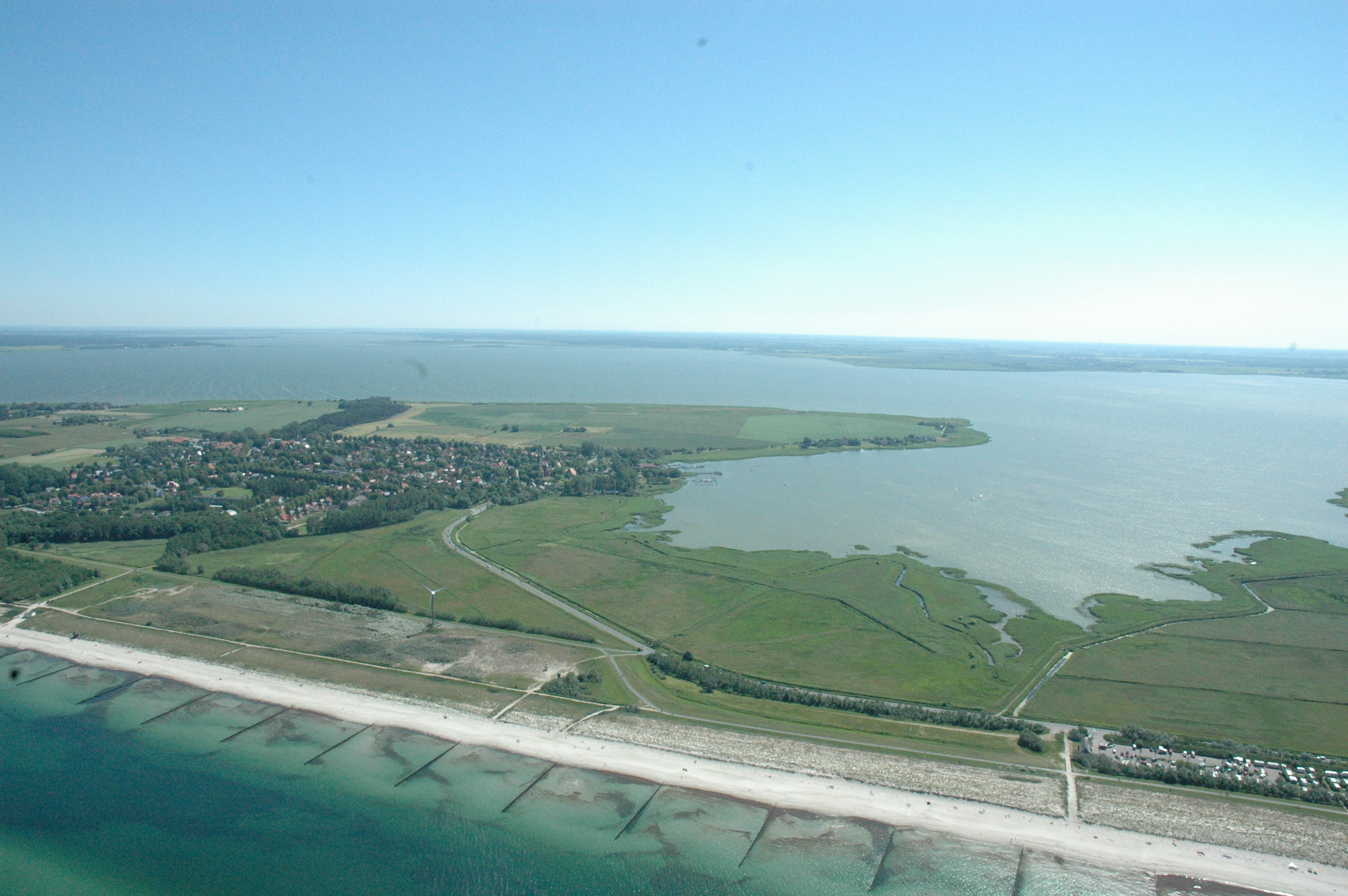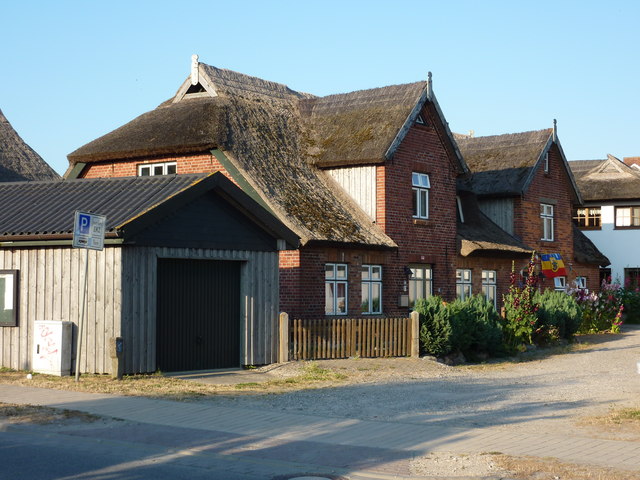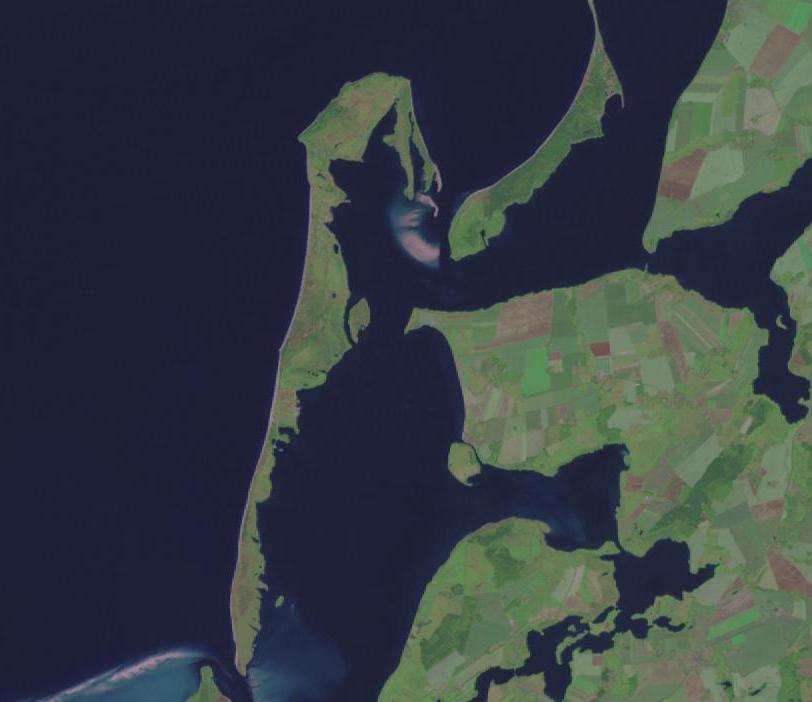|
Fischland
Fischland (literally "fish land") is an isthmus on the southern Baltic Sea coast on the Bay of Mecklenburg in northeastern Germany. It is part of the peninsula of Fischland-Darß-Zingst. Fischland was an island until the 14th century and was bounded by the navigable estuarine branches of the River Recknitz: the Permin in the south and the Loop in the north. In more recent times its southern boundary has usually been considered to be the Recknitz Meadowland (''Recknitzer Stadtwiesen'') and the Rostock Heath (''Rostocker Heide''). To the west and east its boundaries are more obvious: on the one side is its active cliffed coast on the Baltic, and on the other the coastline alongside the Saaler Bodden, only a few centimetres above sea level. Fischland is about 5 km long, between 500 metres and 2 km wide and runs from southwest to northeast. The Pleistocene island core, which is subjected to marked changes as a result of water and wind action, consists of glacial san ... [...More Info...] [...Related Items...] OR: [Wikipedia] [Google] [Baidu] |
Fischland-Darß-Zingst
Fischland-Darß-Zingst or Fischland-Darss-Zingst at www.fischland-darss-zingst.net. Accessed on 18 Dec 2011. is a long in the coastal district of , in the German state of . The three parts of the peninsula, from ... [...More Info...] [...Related Items...] OR: [Wikipedia] [Google] [Baidu] |
Darß
The Darß or Darss is the middle part of the peninsula of Fischland-Darß-Zingst on the southern shore of the Baltic Sea in the German state of Mecklenburg-Western Pomerania. The peninsula's name is of Slavic origin. There is a large forest in the Darß. In recent times, the name "Darß" has also been used to refer to the entire peninsula. The Darß is famous for being a resting place for tens of thousands of migrating cranes and geese. Tourism has long been a source of income and has increased since German reunification, but the Darß is still far from being a crowded tourist place. Location and character The Darß lies northeast of Fischland and west of the peninsula of Zingst, its boundary with the latter being formed by the inlet of the Prerower Strom. To the north lies the Baltic Sea; to the south the lagoons of Saaler Bodden and Bodstedter Bodden, which belong to the Darss-Zingst Bodden Chain. The Darß measures between from north to south and from east to west a ... [...More Info...] [...Related Items...] OR: [Wikipedia] [Google] [Baidu] |
Althagen
The village of Althagen on the peninsula of Fischland-Darß-Zingst in the German state of Mecklenburg-Vorpommern has been a part of the municipality of Ahrenshoop since 1950. Until 1945, the border between Mecklenburg and Pomerania ran between Althagen and Ahrenshoop along the border road, ''Grenzweg''. The Bakelberg knoll lies close to the steep coast of Althagen/ Niehagen. At 17.9 metres above sea level, it is the highest point on Fischland. Althagen has a port on the bodden coast. at www.ostseebad-ahrenshoop.de. Retrieved 20 Jun 2019 Well known residents of Althagen include the designer, (1875-1948), the writer, [...More Info...] [...Related Items...] OR: [Wikipedia] [Google] [Baidu] |
Wustrow (Fischland)
Wustrow () is a municipality in the Vorpommern-Rügen district, in Mecklenburg-Vorpommern, Germany. Notable residents * Klaus Praefcke (1933-2013), chemist * Uwe Stock Uwe Stock (born 5 December 1947) is a German judo athlete, who competed for the SC Dynamo Berlin / Sportvereinigung (SV) Dynamo The Sportvereinigung Dynamo () (''Dynamo Sports Association'') was the sport association of the security agenci ... (* 1947), judoka References Seaside resorts in Germany Cities and towns in Mecklenburg Populated coastal places in Germany (Baltic Sea) {{VorpommernRügen-geo-stub ... [...More Info...] [...Related Items...] OR: [Wikipedia] [Google] [Baidu] |
Permin
The Permin is a bay in the Saaler Bodden lagoon south of Wustrow in northeast Germany. Originally, the Permin was a channel between the Saaler Bodden and the Baltic Sea and the southern estuarine channel of the River Recknitz. It borders on the Fischland in the south.''Seehäfen'' at fischland-darss-zingst.net. Retrieved 7 January 2022. Because the Permin was navigable in the 13th and 14th centuries with average water depths of around 2 to 3 metres, it formed an important waterway for trade to and from the towns of Ribnitz and Barth, although its navigability was frequently degraded by storms and silting u ... [...More Info...] [...Related Items...] OR: [Wikipedia] [Google] [Baidu] |
Bodden
Bodden are briny bodies of water often forming lagoons, along the southwestern shores of the Baltic Sea, primarily in Germany's state of Mecklenburg-Vorpommern. These lagoons can be found especially around the island of Rügen, Usedom and the Fischland-Darss-Zingst peninsula. Some of them are protected reserves, forming the Western Pomerania Lagoon Area National Park. They have a distinctive geological origin and are enclosed by peninsulae, spits and islands, leaving only narrow connections to adjacent bodden or the open sea. Freshwater inflow from the mainland and saltwater inflow from the open sea, which depends on wind direction and force as well as the proximity of the bodden to the sea, result in fluctuating salt gradients and distinctive ecosystems. During the Littorina Sea transgression, an island archipelago was formed by the carving of narrow glacial basins and channels resulting from meltwater. Bodden were formed in a comparatively short period between spits and ... [...More Info...] [...Related Items...] OR: [Wikipedia] [Google] [Baidu] |
Loop (inlet)
The Loop or Darss Canal (''Darßer Kanal'') was an inlet of the sea between the lagoon known as the ''Saaler Bodden'' and the Baltic Sea near Ahrenshoop on the German coast. It formed the northern boundary of the region of Fischland. Originally the Loop was the northern estuarine branch of the River Recknitz. The old inlet ran between the present villages of Ahrenshoop and Althagen. The Loop was roughly two metres deep and had posts for mooring boats and barges. Its navigability was frequently curtailed by storms and silting up. Today only a small ditch remains on the former Mecklenburg-Pomeranian border, which runs alongside a main road, the so-called ''Grenzweg'' ("border way"). The cartographer and court astronomer at the Mecklenburg court, Tilemann Stella, described the Loop thus: ''"Between the village of Oldenhagen lthagenand the Arnshope hrenshoop the waters of the Ribnitz river and lake break through into the salty sea. Beyond the beach is a large pile of rock and bricks ... [...More Info...] [...Related Items...] OR: [Wikipedia] [Google] [Baidu] |
Saaler Bodden
The Saaler Bodden forms the southwestern part of the Darss-Zingst Bodden Chain and lies east of the Fischland peninsula about 30 kilometres northeast of Rostock.''Die General Karte No. 1 - Schwerin-Rostock-Rügen'', 1:200,000 scale, Mairs Geographische Verlag/Falk Verlag, Ostfildern, 2008. Its average depth is around two metres, which restricts angling and the use of pleasure craft. It is a lagoon-like stretch of water known as a ''bodden'', which is typical of this part of the Baltic coastline. South of the Saaler Bodden is the town of Ribnitz-Damgarten, which is divided into two by the mouth of the 72 kilometre long Recknitz river. This southern part of the ''bodden'' is called the Lake Ribnitz (''Ribnitzer See''). Apart from the Recknitz near Damgarten, the other streams that empty into the Ribnitzer See are the ''Klosterbach'' near Ribnitz and ''Körkwitzer Bach'' and ''Fischergraben'' near Körkwitz. A stream called the ''Saaler Bach'' (in its lower reaches known as the '' ... [...More Info...] [...Related Items...] OR: [Wikipedia] [Google] [Baidu] |
Ahrenshoop
Ahrenshoop is a municipality in the Vorpommern-Rügen district, in Mecklenburg-Vorpommern, Germany on the Fischland-Darß-Zingst peninsula of the Baltic Sea. It used to be a small fishing village, but is today known for its tourism and as a holiday resort. Early history Ahrenshoop was first mentioned in 1311 as the defining point of the border of the town of Ribnitz´s property. In 1328 Duke Heinrich II of Mecklenburg donated the area east of this border to the monastery of Ribnitz. In 1395 forces of the City of Rostock destroyed a stronghold, built by Bogislaw VI. of Pomerania, and the harbour of Ahrenshoop. In 1591 the border between Mecklenburg and Pomerania was defined, which runs through the village, still existing today as the "Grenzweg" (border road). After the Treaty of Westphalia in 1648 the Eastern part of the village became part of Swedish Pomerania until 1815, when Sweden ceded Pomerania to Prussia. Until the Grand Duchy of Mecklenburg-Schwerin joined the German Zo ... [...More Info...] [...Related Items...] OR: [Wikipedia] [Google] [Baidu] |
Niehagen
Niehagen is a village in the municipality of Ahrenshoop on the Fischland-Darß-Zingst peninsula in the German state of Mecklenburg-West Pomerania. On the steep coast near Althagen/Niehagen lies the Bakelberg knoll. At it is the highest point of Fischland. The sculptor, Gerhard Marcks, lived and worked in Niehagen in the 1930s, at ''Boddenweg 1''. Hof bei Niehagen - geo-en.hlipp.de - 11780.jpg, Farm near Niehagen Niehagen Steilküste Bunker 2013-09-04 11.JPG, Bunker system exposed by coastal erosion Coastal erosion is the loss or displacement of land, or the long-term removal of sediment and rocks along the coastline due to the action of waves, currents, tides, wind-driven water, waterborne ice, or other impacts of storms. The landwa ... on the Hoher Ufer near Niehagen External links Vorpommern-Rügen Villages in Mecklenburg-Western Pomerania {{VorpommernRügen-geo-stub ... [...More Info...] [...Related Items...] OR: [Wikipedia] [Google] [Baidu] |

.png)




